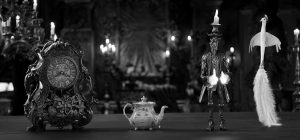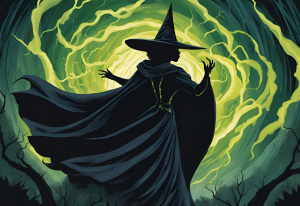
When I walked into the movie theatre on the opening weekend of the new Disney fairytale, I was very worried that the revamped Beauty and the Beast would tarnish the original’s name.
As a long-time Disney fan, I hoped the film would expand a bit on the story without a complete plot rewrite like the new Alice in Wonderland movies and other remakes in the past. I was surprised to find the perfect balance between new and old aspects of the film.
Predictable with a live-action version, the movie grounded the old fairytale in reality much more than its predecessor.
On top of it featuring less-cartoonish enchanted characters and using Marie Antoinette-esque makeup and hair for the French aristocrats, it expanded on the backstories of Belle, her parents, Gaston, LeFou, the Beast, and even the Enchantress that casts the spell on the castle.
Unlike the first movie, Belle is the engineer in the family who wears pants underneath her dress, and she helps take on Gaston at the climax rather than arriving after the action. She also faces and comes to terms with her mother’s death; previously, her mother’s identity was a mystery.
I greatly appreciated Belle’s increased agency and independence in this version. More than making a more-intriguing movie, it evokes a princess who is not only beautiful and brave, but able to take action as well.
This version also showed a kinder side to the Beast through a more strenuous backstory of a kind boy with a cruel father, making his transition from mean to kind that much more impactful. Most importantly, instead of a village of white characters calling Belle odd, the cast in the village and the Beast’s castle is much more diverse than the original.
Somewhat controversially, Josh Gad charmingly played LeFou (Gaston’s henchman and admirer), whose backstory was also expanded. When the director, Bill Condon, confirmed that the character was gay and would have an “exclusively gay moment,” I was all the more excited for the movie’s release.
Unfortunately, my and Condon’s definitions of “moment” are a bit different. In the finale, as Belle and her prince twirl around the ballroom, the camera cuts to LeFou dancing with a random man for 1.5 seconds, about the time it takes to glance over at the popcorn bucket and take another handful.
Imagine if Belle and the prince’s “moment” together was so short. The film even gives Lumiere and his love interest Plumette a kiss when they become human, focusing more throughout the film on their stable, straight relationship than LeFou’s complicated feelings. He goes from “somebody who on one day wants to be Gaston and on another day wants to kiss Gaston” (said Condon) to getting over the villain’s death, embracing his sexuality, and starting a new relationship with the nondescript man.
Though this “moment” is still a big step in Disney’s long history of audiences only being able to question a character’s queerness, gender- or sexuality-wise, it did leave me with a bit of sadness. Disney’s staunch refusal to address sexuality and gender outside the norm is especially frustrating following the influential company’s push in recent years towards princesses of every nationality. A fleeting second of stereotypical sort-of representation for the LGBTQ+ community is hardly the best they can do.
Overall, I enjoyed the movie’s deviations from the original plot and script. They all only added to the full story, rather than making it confusing or changing it completely. The new Beauty and the Beast stays true to its predecessor while adding enough surprises to keep veterans of the story interested, but to consider it a part of true LGBTQ+ representation would be too inaccurate.







Be First to Comment